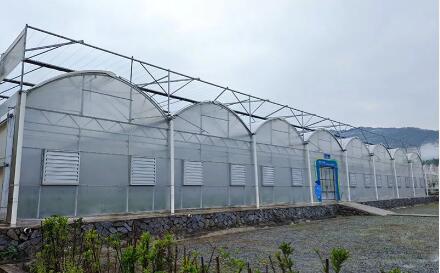How to Choose the Right Multispan Plastic Film Greenhouse for Your Farm
2024-08-16
Selecting the right multispan plastic film greenhouse is crucial for the success of your agricultural endeavors. With various designs, materials, and features available, it's important to consider several factors to ensure you choose the best greenhouse for your needs. In this blog, we'll guide you through the key considerations when selecting a multispan plastic film greenhouse.
1. Determine Your Growing Requirements:
Before choosing a greenhouse, it's essential to assess your specific growing needs:
- Crop Type: Different crops have varying requirements for temperature, humidity, and light. Determine whether the greenhouse can accommodate the specific needs of your crops.
- Seasonality: Consider whether you plan to grow year-round or seasonally. A greenhouse with efficient climate control will be necessary for year-round cultivation.
- Space Requirements: Estimate the amount of growing space needed based on the scale of your operation. Multispan greenhouses offer flexibility in size, so choose a model that fits your space and production goals.
2. Consider the Greenhouse Frame Material:
The frame of the greenhouse is a critical component that determines its durability and stability. Common materials include:
- Galvanized Steel: Offers excellent strength and resistance to corrosion, making it ideal for long-term use.
- Aluminum: Lightweight and corrosion-resistant, aluminum is suitable for smaller greenhouses or areas with mild weather conditions.
- Wood: Provides natural insulation and aesthetic appeal but requires regular maintenance to prevent rot and pest damage.
3. Evaluate the Plastic Film Covering:
The type of plastic film covering is another important factor to consider:
- Polyethylene (PE): The most common plastic film, known for its affordability and flexibility. PE films can be treated for UV resistance, extending their lifespan.
- Polyvinyl Chloride (PVC): More durable and long-lasting than PE, but also more expensive. PVC is ideal for regions with harsh weather conditions.
- EVA (Ethylene Vinyl Acetate): Offers superior light transmission and insulation, making it suitable for high-value crops.
4. Assess Ventilation and Climate Control Features:
Proper ventilation is crucial for maintaining optimal growing conditions inside the greenhouse. Look for features such as:
- Roof Vents: Allow hot air to escape, preventing overheating.
- Side Vents: Promote airflow and help regulate temperature and humidity.
- Cooling Systems: Consider greenhouses with built-in cooling systems, especially if you're growing in hot climates.
- Heating Systems: For cold climates, choose a greenhouse with an efficient heating system to maintain consistent temperatures.
5. Consider Your Budget:
Lastly, consider your budget and the long-term return on investment:
- Initial Costs: Factor in the cost of materials, installation, and any additional features such as climate control systems.
- Maintenance Costs: Consider the ongoing costs of maintaining the greenhouse, including replacing the plastic film, repairing the frame, and energy usage for heating and cooling.
Conclusion:
Choosing the right multispan plastic film greenhouse involves careful consideration of your growing requirements, the materials used, and the climate control features. By taking these factors into account, you can select a greenhouse that not only meets your immediate needs but also supports long-term agricultural success.



